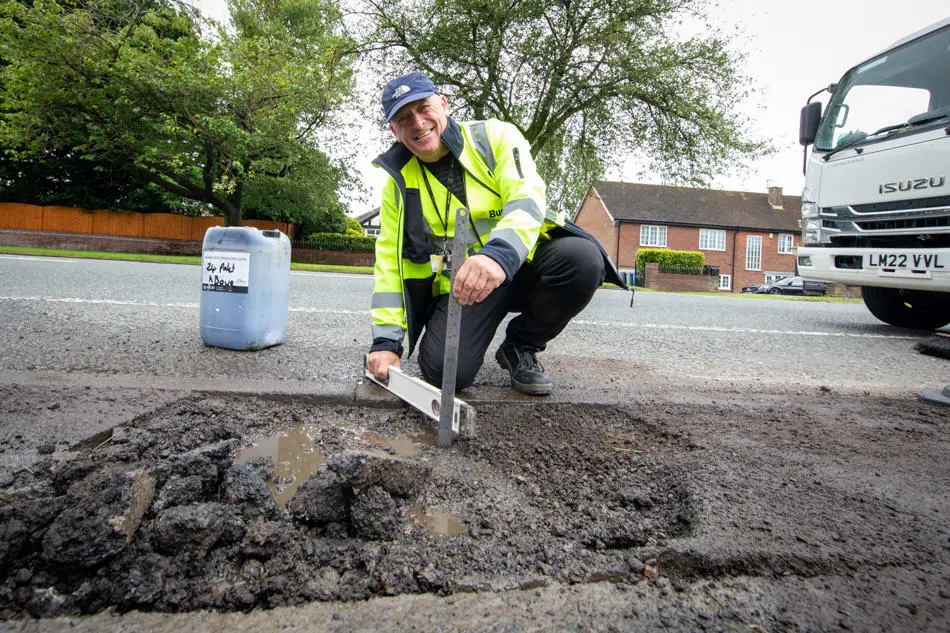Each year we carry out planned highway resurfacing schemes and planned preventative maintenance works to help prevent potholes from forming and to reduce the number of pothole repairs we need to carry out. This investment in our roads costs around £11.5 million per year.
Despite this extra investment, in a typical year, we repair around 11,000 potholes.
Identifying potholes
A pothole is a hole in a road surface that results from gradual damage caused by a combination of traffic and bad weather.

To identify potholes, we carry out planned highway safety inspections to all the adopted highway within the Bury borough.
Our highway inspectors inspect over 660km of adopted roads across the Bury borough, either on a monthly, quarterly or annual inspection basis depending on the hierarchy classification of a road.
- Our busiest roads (eg 'A' roads and roads in town centres) are inspected every month
- Link roads are inspected every three months
- Quieter streets (eg estate roads and cul-de-sacs) are inspected annually.
All streets are inspected at least once per year and any actionable defects will be issued for repair.
We aim to permanently repair potholes on the first visit, but semi-permanent and temporary repairs are sometimes carried out for a variety of reasons, for example where resurfacing is already planned as part of our resurfacing programme.
How we prioritise potholes for repair
Our priority is to keep the roads safe, taking a risk-based approach to the repair of highway defects.
Road defects that are a threat to safety are always prioritised first.
Lower risk potholes are prioritised for repair based on:
- Location
- Size and depth of the defect
- Position in the road
- Category of road
- Number of highway users
- Whether we already plan to fix the issue as part of an improvement or preventative maintenance scheme.
Defects that pose a greater risk to highway users will be repaired more quickly.
Road defects are risk assessed during routine inspections carried out by our team of highway inspectors, to determine if the defect warrants repair, and if so, how quickly a repair should be carried out.
Fixing potholes
There are two main ways we fill potholes:
- Filling the pothole with material and compacting it down. This is carried out using hot or cold material, where it is not appropriate to carry out a more permanent repair. This method is often used as a temporary measure until a permanent repair can be completed, or when a road is due to be resurfaced.
- Cutting out the area around the pothole, removing all loose material, applying a bond coat and joint sealant (to stick the new material to the surface below), filling the hole and then compacting it.
Timescales
- We aim to complete emergency, high risk repairs within two hours. These defects will be repaired immediately where practical but may be sectioned-off with cones and barriers where this is not possible.
- Most minor risk repairs are usually completed within 28 days of reporting by our inspection team, however some defects which are of very low risk to road users may not repaired for up to six months.
For the safety of road users, there are occasions where a temporary repair is carried out for a quick fix and followed up with a permanent repair later.
Pothole repair process in pictures
Please note: The pothole repair process also includes application of a tack coat applied to the existing surface to act as a bonding agent between the old and new surfacing. Joint sealant as shown isn't always applied.
How to tell us about a pothole
Potholes should be reported online so that you can check first if it has already been reported to us or not. When you report a pothole online you will also be able to check yourself where we are up to with its repair.